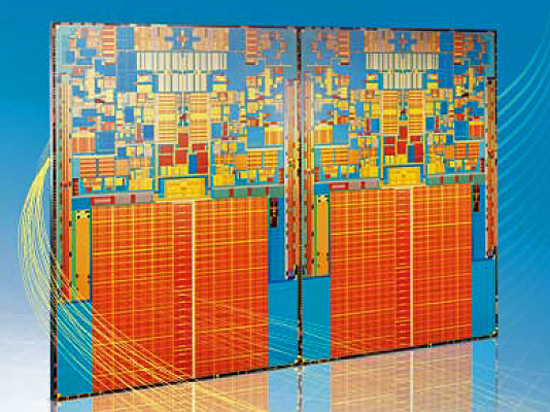Intel's Larrabee Architecture Disclosure: A Calculated First Move
by Anand Lal Shimpi & Derek Wilson on August 4, 2008 12:00 AM EST- Posted in
- GPUs
Introduction
Oooh this is dangerous.
It started with Intel quietly (but not too quietly) informing many in the industry of its plans to enter the graphics market with something called Larrabee.
NVIDIA responded by quietly (but not too quietly) criticizing the nonexistant Larrabee.
What we've seen for the past several months has been little more than jabs thrown back and forth, admittedly with NVIDIA being a little more public with its swings. Today is a big day, without discussing competing architectures, Intel is publicly unveiling, for the first time, the basis of its Larrabee GPU architecture.

Well, it is important to keep in mind that this is first and foremost NOT a GPU. It's a CPU. A many-core CPU that is optimized for data-parallel processing. What's the difference? Well, there is very little fixed function hardware, and the hardware is targeted to run general purpose code as easily as possible. The bottom lines is that Intel can make this very wide many-core CPU look like a GPU by implementing software libraries to handle DirectX and OpenGL.
It's not quite emulating a GPU as it is directly implementing functionality on a data-parallel CPU that would normally be done on dedicated hardware. And developers will not be limited to just DirectX and OpenGL: this hardware can take pure software renderers and run them as if the hardware was designed specifically for that code.
There is quite a bit here, so let's just jump right in.










101 Comments
View All Comments
Griswold - Monday, August 4, 2008 - link
You seem to be confused. Time for a nap.MDme - Monday, August 4, 2008 - link
but AMD will have Cinema 2.0. did you see that demo? by 2010, AMD will have the RV990 or whatever...and Nvidia will have GT400?phaxmohdem - Monday, August 4, 2008 - link
Considering how long it took nVidia to release a single GPU significantly faster than G80, I'd be shocked if we wee GT300 by 2009/2010. however a GTX 295GT X2 ULTRA OC is not out of the question ;)shuffle2 - Monday, August 4, 2008 - link
mm², how hard is that to write? >.>1prophet - Monday, August 4, 2008 - link
They need to hit one out of the park with the drivers (software)as well.jltate - Tuesday, August 5, 2008 - link
I've got a bunch of comments, so I'll just list them all here.SSE doesn't have fused multiply-add operations. Larrabee does -- thus that 10 core processor could perform a peak of 320 floating point operations per cycle (it's mentioned in the SIGGRAPH paper).
Larrabee's programming model is variable width -- the hardware can and likely will be augmented in the future to perform more than just 16 operations in parallel.
The ring bus between cores was stated to be for each group of 16. Intel stated that for more than 16 cores they'd use "multiple short-linked rings".
Also, the diagram only shows one memory controller on one side with fixed function logic on the other, not two memory controllers as you showed on page 5 of your article. However, Intel stated in the paper that the configuration and number of processors, fixed function blocks and I/O controllers would be implementation dependent. So in effect it could very well have a half-dozen 64-bit interfaces like G80.
My forecast? This thing will rock. I for one simply cannot wait.
Laura Wilson - Monday, August 4, 2008 - link
that's the truththey say they know this. it sounds like they know this ... we'll see what happens :-)
gigahertz20 - Monday, August 4, 2008 - link
I'm going to predict Larrabee will provide a huge boost of performance over Intel's current crappy integrated graphic solutions, but will not be able to compete with AMD/ATI's and Nvidia's high end GPU's when it (Larrabee) finally launches. If Intel can deliver a monster that can push 100+ FPS in Crysis and doesn't cost so much that it breaks the bank like the current Nvidia GTX 280's, then they will have a real winner! When it finally launches though, who knows what AMD/ATI and Nvidia will have out to compete against it, wonder if Intel is just trying to push out a mainstream chip or go high end as well...guess I need to read the rest of the article :)JEDIYoda - Tuesday, August 5, 2008 - link
dreaming again huh??? you people who want top notch performance without having to pay for it....rofl..hahahaFITCamaro - Monday, August 4, 2008 - link
This isn't mean to compete with their IGPs. At least not initially.